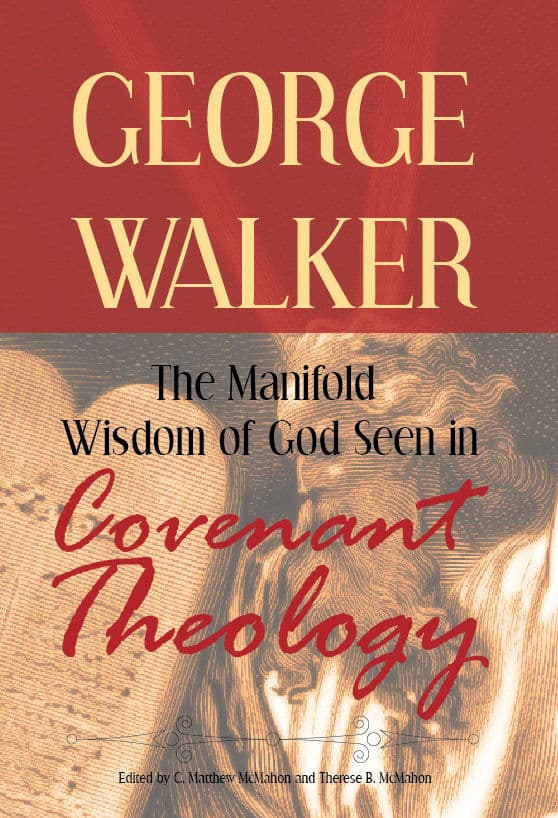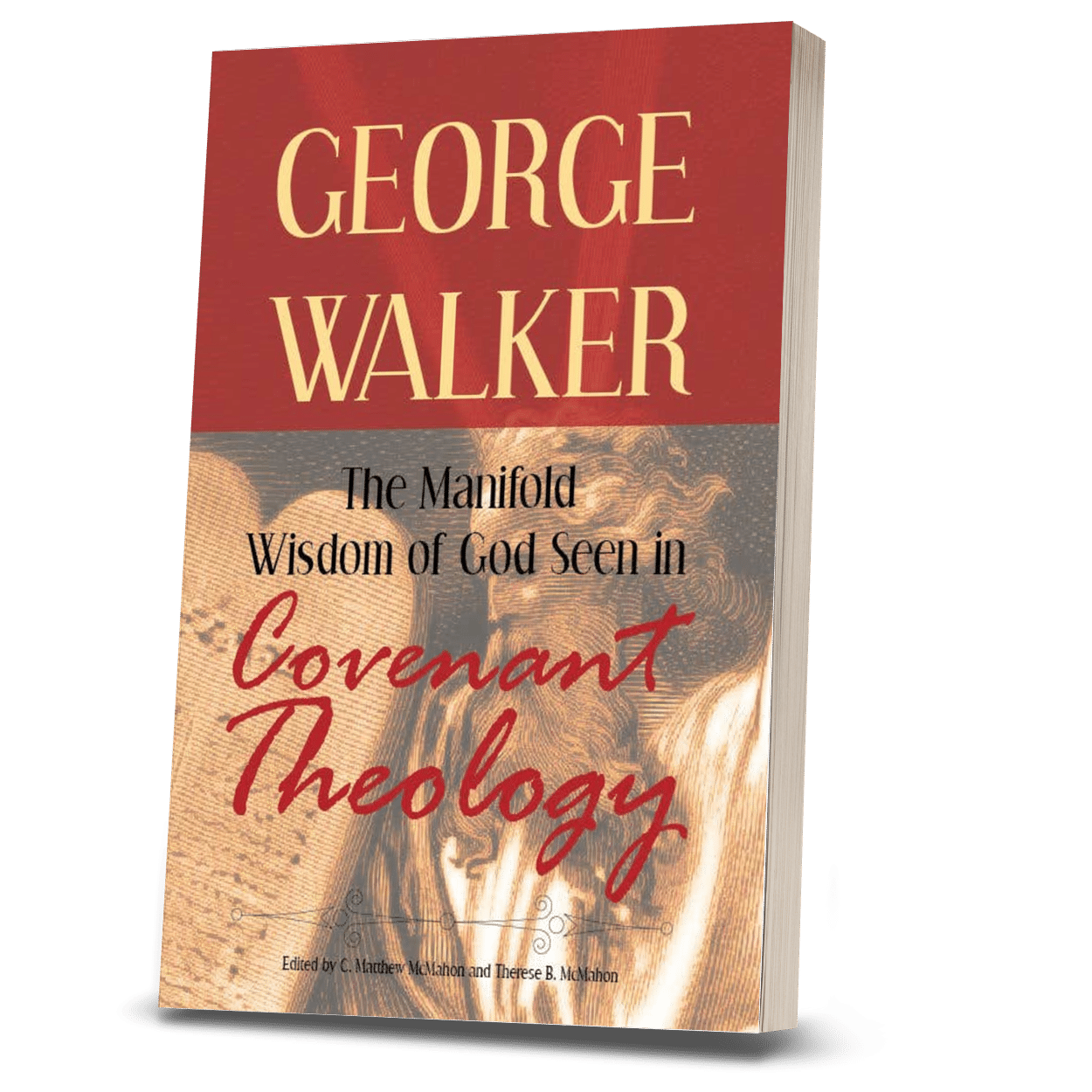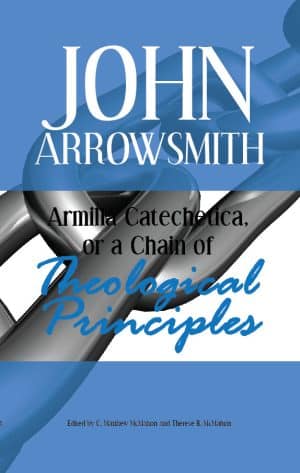$7.99
Don’t read this if you want to keep your dispensationalism! Walker thoroughly explains the agreement and differences in the covenants, and how God’s wisdom is seen in sending Christ, the Mediator of the covenant, for his people. A classic Westminsterian work by one of the divines.
Description
The Manifold Wisdom of God Seen in Covenant Theology, by George Walker (1581-1651)
EBOOK
File Types: PDF, MOBI and ePub
eBook download price: $7.99
eISBN: 978-1-938721-24-3
PRINT
Print Hardback, 150 pages, (Buy the hardback print book Here) $26.99
ISBN: 978-1-938721-25-0
Print Paperback, 150 pages, (Buy the paperback print book Here) $19
ISBN: 978-1-62663-267-7
George Walker (1581-1651) was a Calvinistic puritan, prolific author and preacher, as well as a distinguished and active member of the Westminster Assembly.
This work on covenant theology demonstrates the great profit and benefit arising from the knowledge of the true difference between the Old and New Testaments seen in the Covenant of Works and the Covenant of Grace, or the Law and the Gospel. Walker masterfully unfolds the probation of man in the Covenant of Works, and shows the blessings and promises of the Covenant of Grace. He also expounds the agreement between the Covenant of Grace in the Gospel, and the mixed covenant which God made with Israel on Mount Horeb, by the ministry of Moses. All of this is demonstrated to show God’s singular providence in preparing the means of grace fit for the several ages of the world through Jesus Christ.
This is not a scan or facsimile, and contains an active table of contents for electronic versions.
Table of Contents:
CHAPTER 1
The great profit and benefit which arises from the knowledge of the true difference between the Old and New Testament is the Covenant of Works and the Covenant of Grace; the Law and the Gospel.
CHAPTER 2
What the word testament signifies, and what is the nature of a testament. That the Scriptures both of the Old and New Testament are called testaments only in respect to Christ, who by his death ratified them, and not in respect of God the Father, who could not die to make them in force. The agreement and difference between the Old and New Testament are plainly shown.
CHAPTER 3
The doctrine of the former chapter is applied by way of use, to confute five differences which the schoolmen have made, and three differences which the Jesuits have added to them, between the Old and New Testament, and their vanity is discovered by this, and a two-fold use is moreover shown.
CHAPTER 4
What the word covenant signifies, what is the nature of a covenant in general.
CHAPTER 5
The several kinds of covenants between God and men. The Covenant of Nature is described. The Covenant of Grace is unfolded, and the blessings in it promised are rehearsed. That this covenant is a covenant of free grace is plainly proved. The division of it into the Old and New Covenant.
CHAPTER 6
The Covenant of Grace first made with Adam after his fall. The liberty by it given to man proves that we gain more by Christ then we lost in Adam. Of the renewing of it with Noah. The forces of renewing it with Abraham, and revealing it more plainly by seven things. Of the renewing of it with Israel and Mount Sinai and by Moses. That it is called the Old Covenant in respect of the New Covenant in the Gospel. That it is mixed of the Covenant of Works and of the Covenant of Grace. The reasons why God is making it did renew the Covenant of Works, and mingle it with the Covenant of Grace made with man in Christ after his fall.
CHAPTER 7
Of the New Covenant of Grace, as it is made most plainly in the Gospel, and in the New Testament. The reasons why it is called the New Covenant.
CHAPTER 8
The method and order propounded, which is to be followed in showing how the New and Old Covenants of Grace agree and differ.
CHAPTER 9
The three-fold agreement between the Covenant of Nature, which is called the first covenant, and the Covenant of Grace, which is called the second covenant.
CHAPTER 10
The six notable things in which the Covenant of Nature differs from the Covenant of Grace.
CHAPTER 11
The profitable and holy use which may be made of the doctrine concerning those differences between the Covenant of Nature and the Covenant of Grace.
CHAPTER 12
The six-fold agreement between the Covenant of Grace, as it was revealed to the fathers of the Old Testament, and the same renewed and more fully explained in the Gospel.
CHAPTER 13
The seven-fold differences between the Covenant of Grace, as it was made with the fathers, and the covenant as it was made in the Gospel.
CHAPTER 14
A two-fold use is made of the doctrine in the two former chapters.
CHAPTER 15
The agreement between the pure and plain Covenant of Grace in the Gospel, and the mixed covenant which God made with Israel on Mount Horeb, by the ministry of Moses, which consisted partly of the Covenant of Works, and partly the Covenant of Grace.
CHAPTER 16
The several differences between the pure and mixed covenant.
CHAPTER 17
The use of the doctrine is shown for the discovering of God’s singular providence in preparing means of grace fit for the several ages of the world.
CHAPTER 18
The signification of the words, Law and Gospel. How they agree and differ, being taken in their several senses. Finally, the use of the doctrine.






